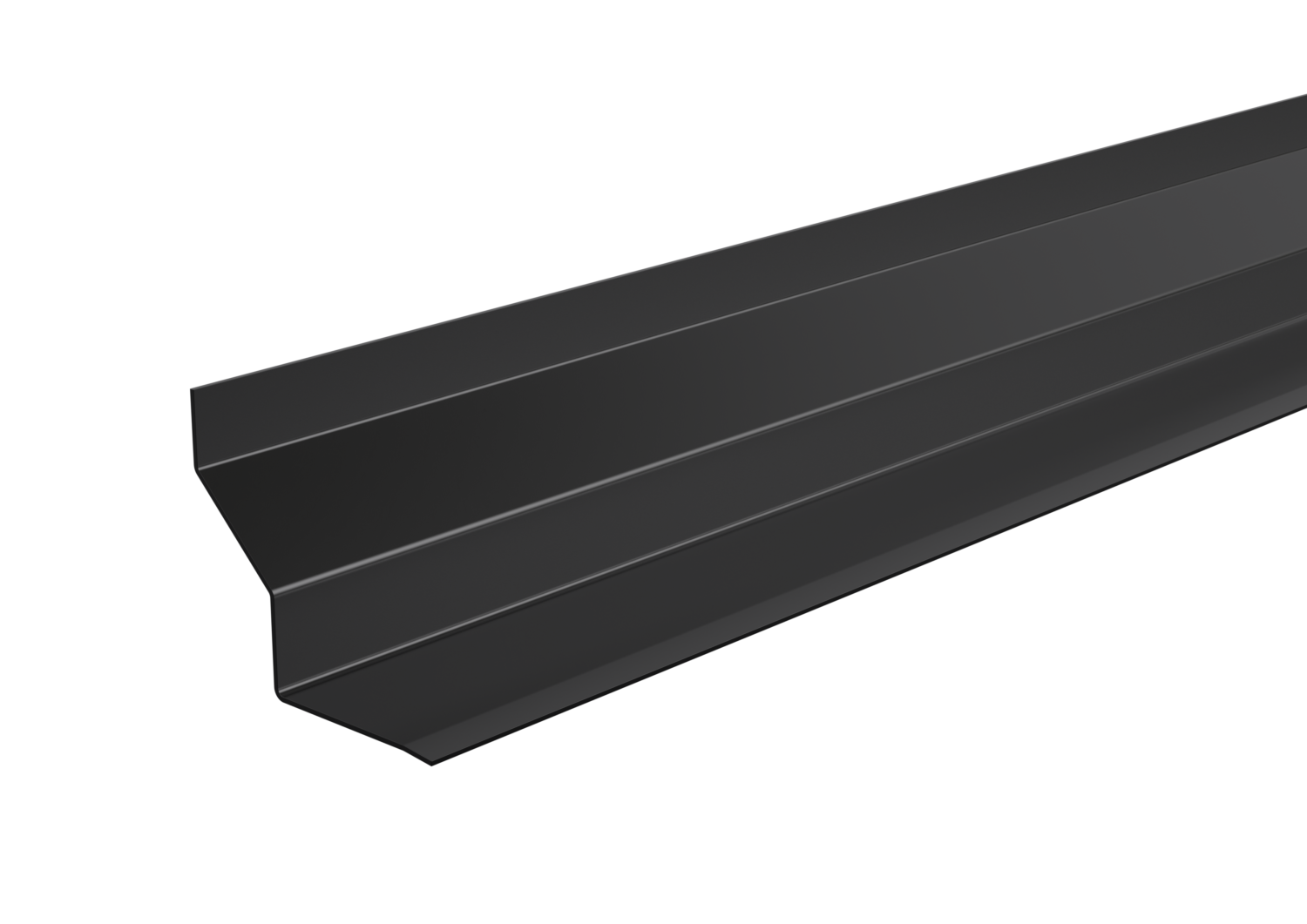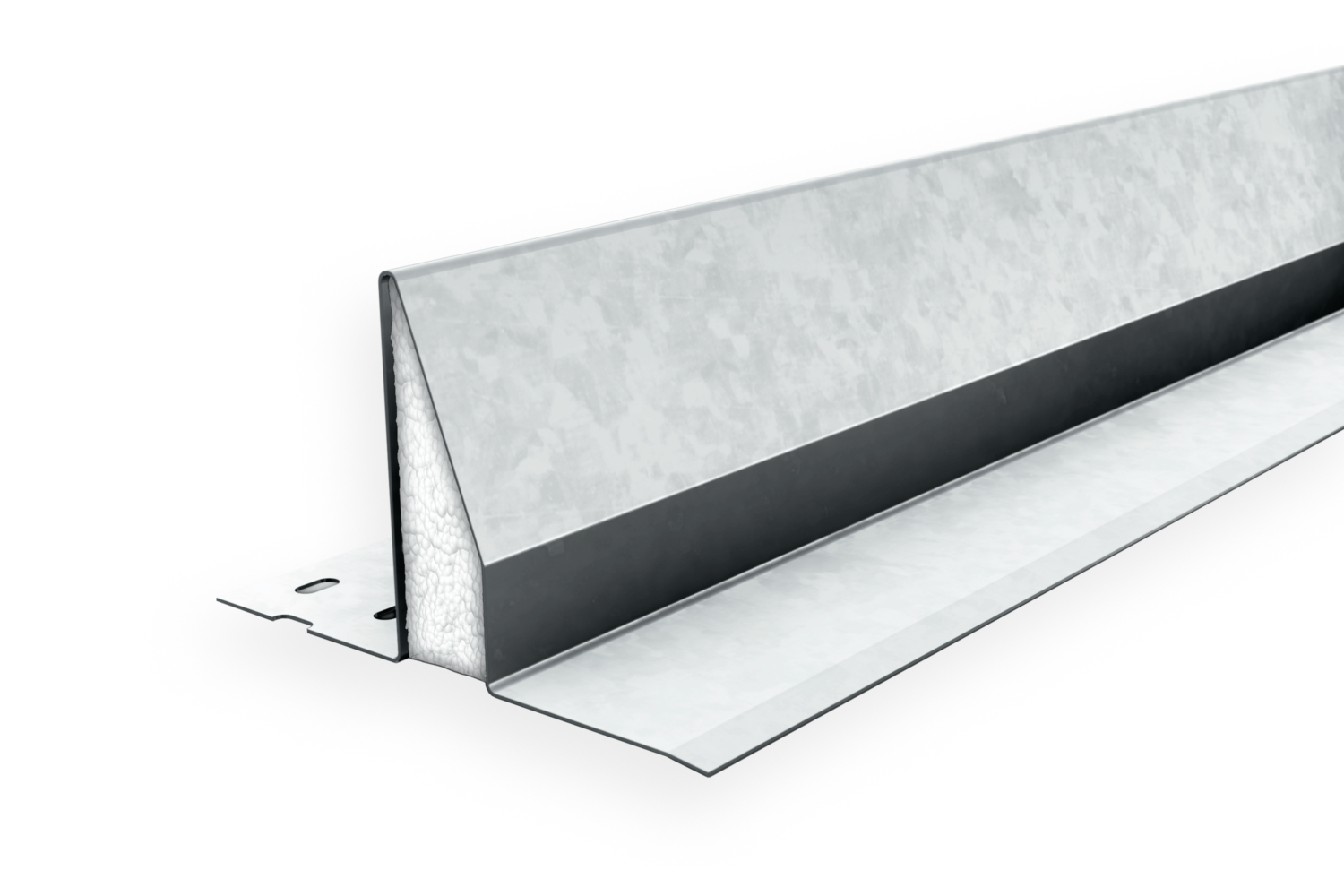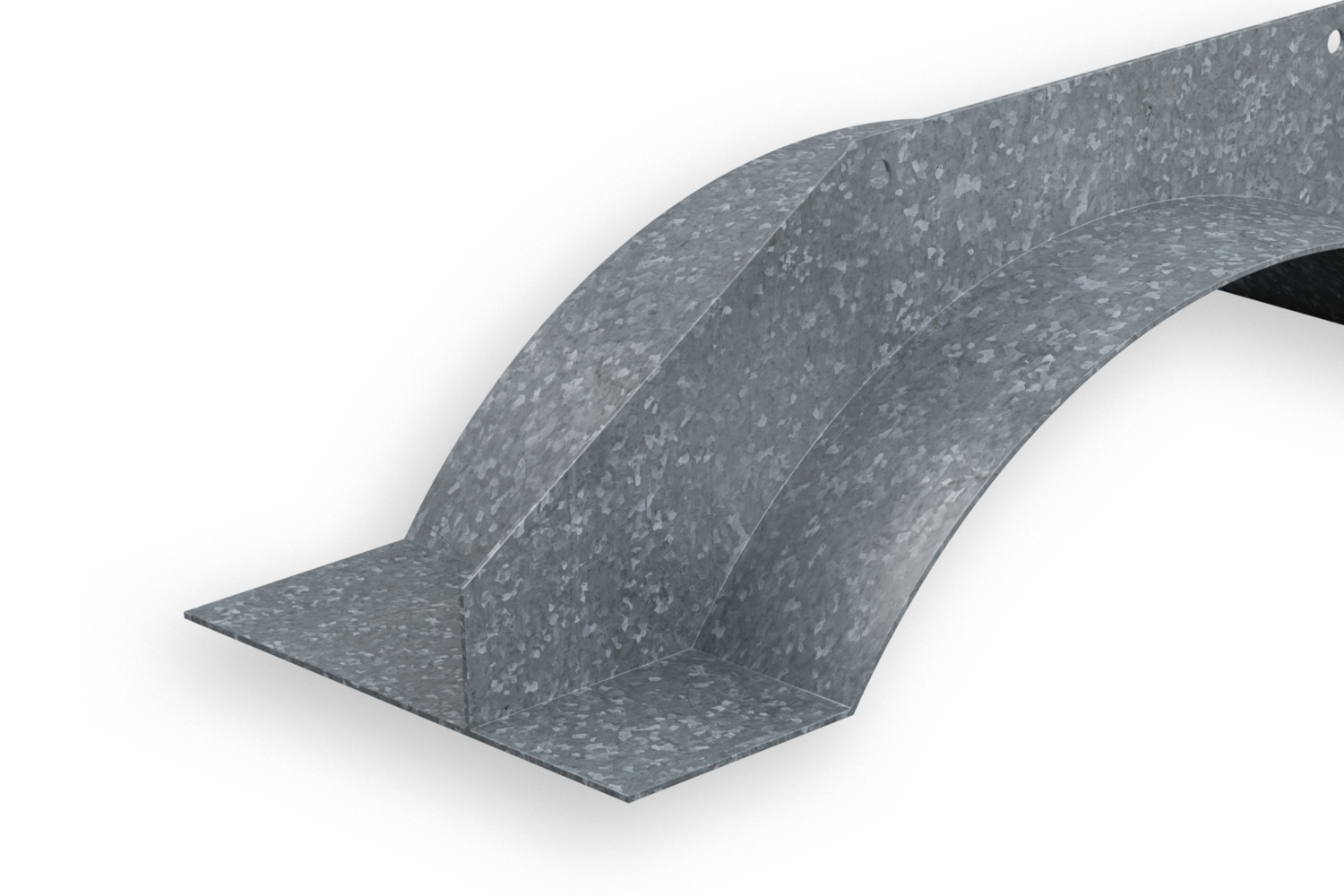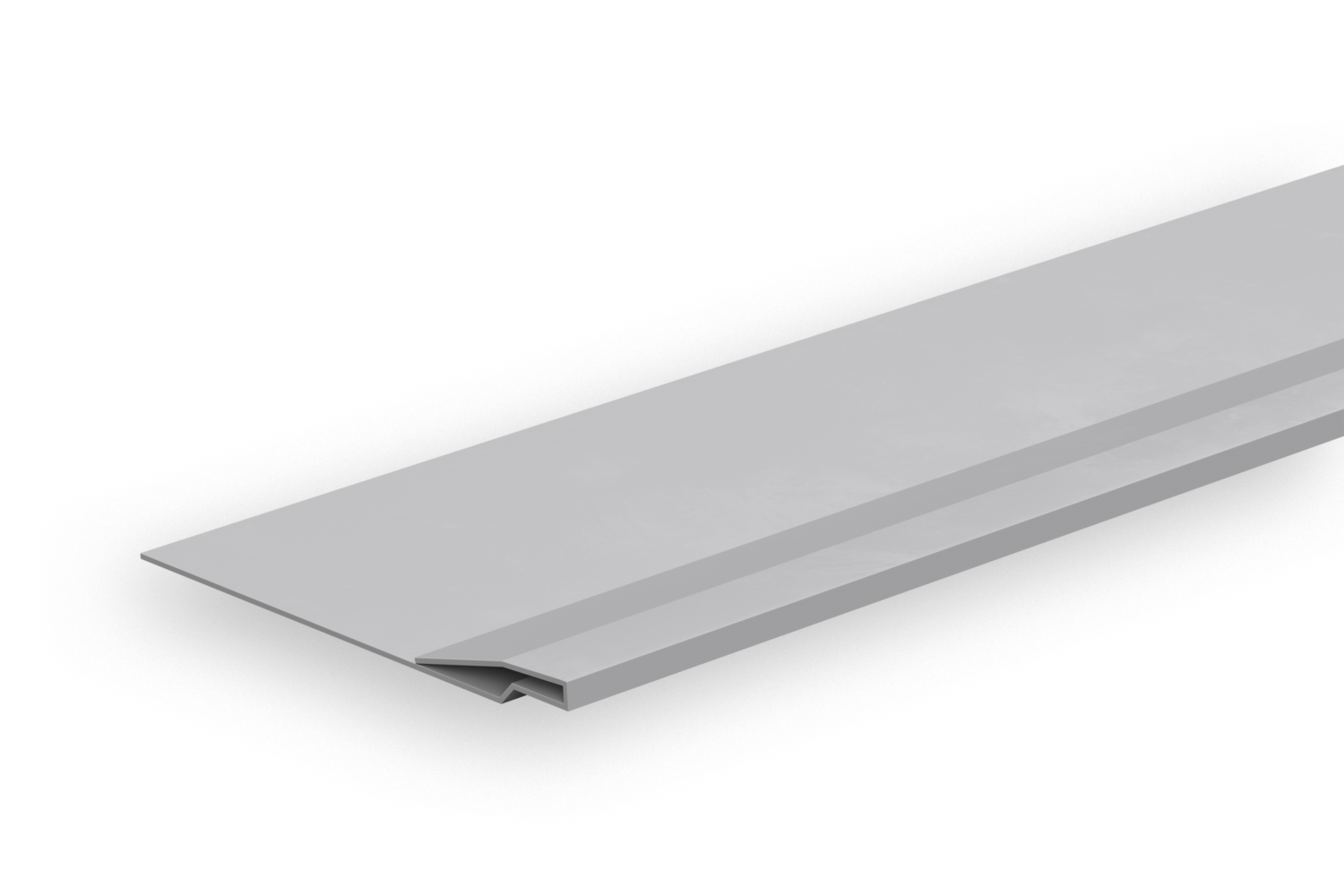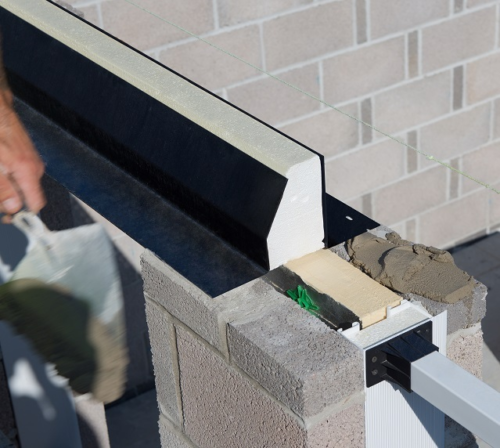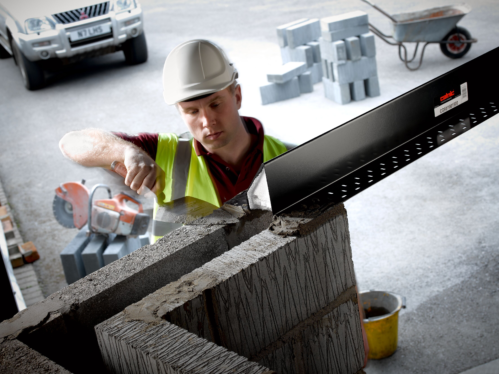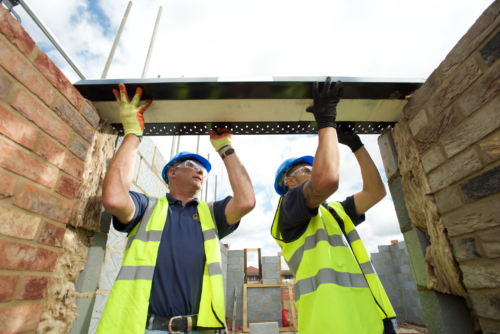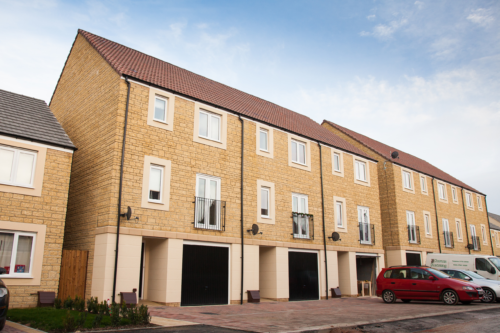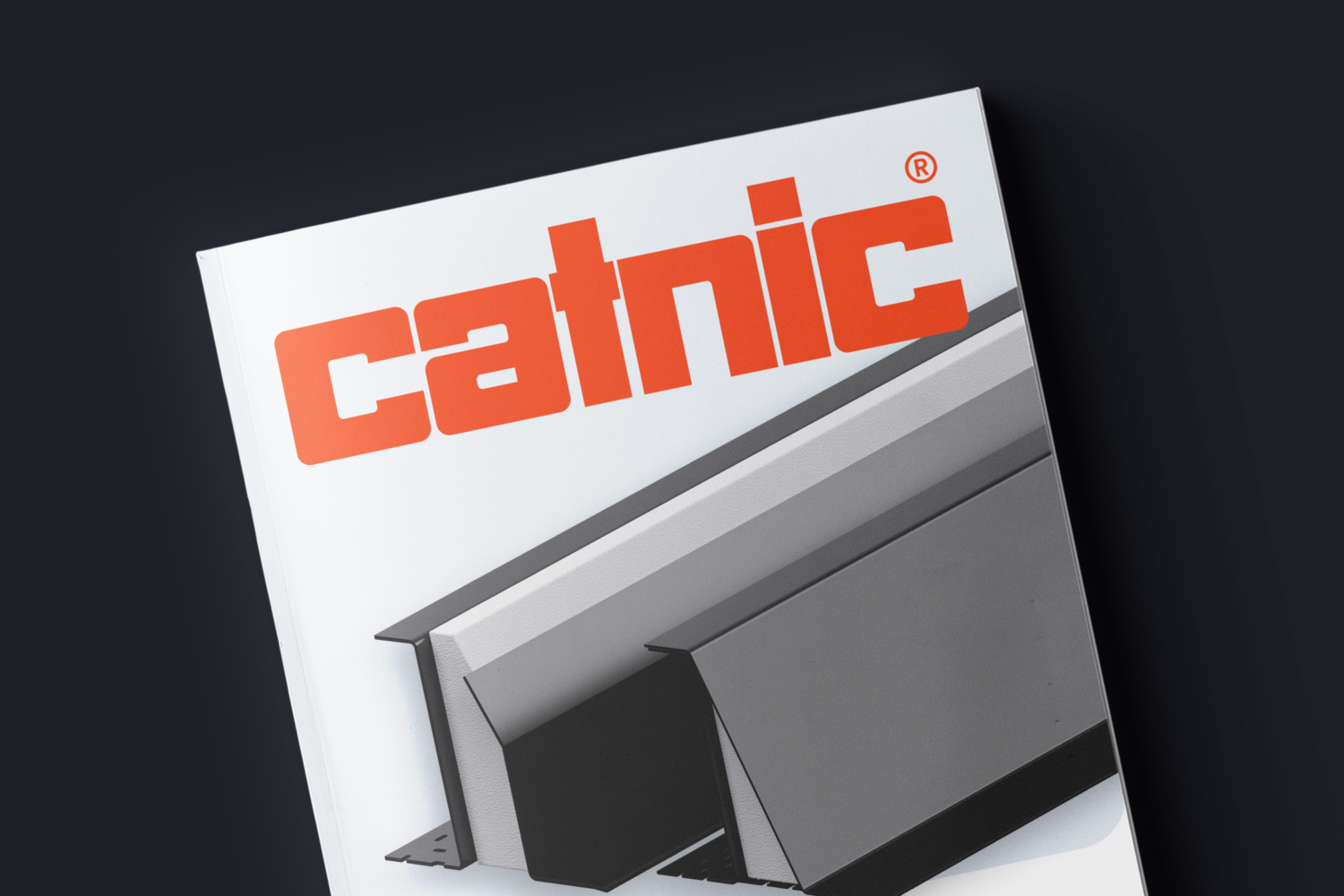Support & FAQs
Timber frame lintels are designed specifically to support the loads of masonry cladding over a proposed opening in a timber frame wall, while other loads are supported by the timber frame superstructure.
Timber frame lintels have a distinctive shape which differentiates them from all other lintels. They are a single element with a sloping outer face and duplex corrosion protection which, combined, provides a built-in DPC (damp proof course). Timber frame lintels have a unique upstand at the top for easy use of restraint clips in order to secure the lintel to a timber frame.
Read more: How are timber frame lintels built into the external wall?
Timber frame lintels are not insulated as they act only as structural support for the masonry cladding. In this type of wall, the insulation is placed within the timber frame superstructure.
The size of lintel you need is mainly determined by the structural opening span you have to cover, plus an additional 300 mm. This can vary from project to project, meaning accurate measurements are key to a successful installation.
Read more:Lintel size guide: How to specify lintel dimensions
Calculating the load imposed on lintels depends on a variety of factors, including the wall type in which the lintel is installed, and whether floor or roof loads need to be accounted for in addition to masonry loads.
Lintels are primarily designed to support uniformly distributed loads (UDLs), but on occasion, when point loads occur, they also need to be considered. This guide only provides an overview of how the loads on the lintel are established and should not be used as a substitute for obtaining loading calculations directly from the lintel manufacturer or a qualified structural engineer.
Timber frame lintels should be fully bedded on bricklaying mortar, with a drip on the lintel toe facing the outside of the building. The lintel should be levelled along the length and width.
Timber frame lintels must also be secured with restraint clips at the top of the lintel and a pinch batten at the heel to prevent lateral deflection (twist) during the building stage. Restraint clips are to be screwed on or nail-fixed to the timber frame to allow for differential movement between the timber structure and the brick facing.
Timber frame lintels must be propped during construction. When propping, a horizontal board should be placed along the flat underside of the lintel soffit to prevent point loading and localised deformation of the lintel flange. On small openings, use a single prop placed centrally within the opening and gently wedge it into place. For larger openings, increase the number of props, installing them at a maximum distance of 1 metre apart. Once the mortar has cured and the wall ties are effective, the props can be removed.
What our customers think
Video Guides
When selecting a lintel, there are three factors that should be considered to ensure the correct specification: the type of wall construction, the dimensions of the structural opening and the total load on the lintel. In this video, we run you through the lintel selection process.
Once you have chosen the correct lintel for your project, it is crucial that the lintel be installed properly – if it is not, it could lead to serious issues for the building. In this video, we explain the installation considerations for cavity wall lintels.
Catnic’s Thermally Broken Lintel is the only lintel on the market to provide a complete thermal break between the inner and outer leafs. In this video, we outline the key benefits of Thermally Broken Lintels and explain the installation process.
Steel lintels, and specifically Catnic's thermally broken lintels, have a significant role to play in reducing thermal bridging and achieving carbon gains. They represent one of the simplest and most economical ways for building fabric to be designed and constructed to help achieve the carbon gains necessary to meet current and future building regulations.
